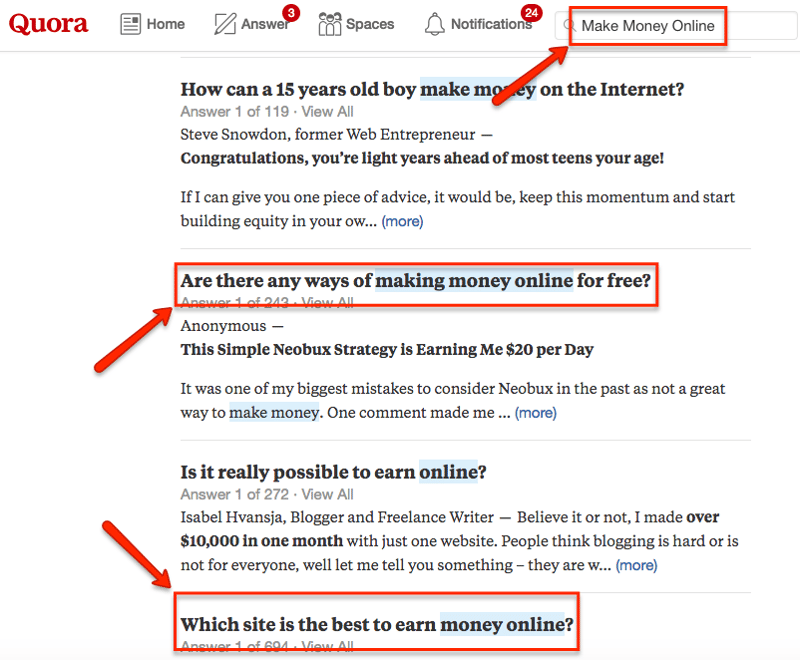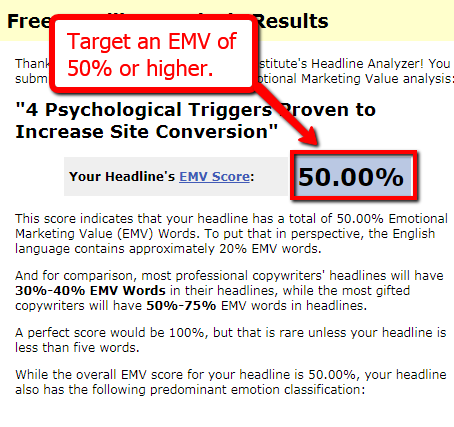
One of the most crucial objectives that content marketers consider when producing content is to make it go viral.
After all, the more your audience read, comment, and share your content, the closer you get to achieving your ultimate objective — to generate sales.
And so the question becomes…
“What makes content go viral?”
“How do you create a piece of content that your audience will love and share?”
The short answer to this question is “Value.”
Your content needs to provide value to your readers — TONS of it.
For the content to have value and increase your site’s conversion, you’ll need to present that information in a strategic manner as well.
You need to incorporate psychological triggers that will stimulate your reader’s thought processes to influence them to take action.
While there are many psychological triggers you can take advantage of, in this post, we’ll be discussing four very effective ones.
1. The Promise of Pleasure and Pain Avoidance
It’s human nature to act on anything that will help avoid pain or gain pleasure.
If you think about most of the things you’ve purchased in your life, you’ll discover that you did so with those two objectives.
Your house, car, home entertainment system, communication equipment, clothes, health insurance, and even your food — you paid for them to avoid pain or to gain pleasure.
As such, when writing your content, think of how you can present your information in a way that it appeals to your readers’ desire for pleasure or avoidance of pain.
Here are some questions that you can consider:
What is it about your product that can bring the ultimate pleasure to your readers?
How can your product help your readers with their pain points?
The only way you can answer these questions is if you know your audience. That is why it’s crucial for you to put together a buyer persona before you run your marketing campaigns.
To get a better perspective of the needs of your readers, you can scour the web for the possible questions that they might be asking.
That’s where Q&A platforms like Quora come in.
Just by typing your keywords in Quora’s search engine, you’d be able to see the kind of questions your community is asking about your topic.
As an example, I typed in the keyword phrase, “Make money online” in Quora’s search box. Here are the results it came back with.

As you continue your search by adding variations of your keywords, you’ll see several more questions that will help you gain a better understanding of your audience's needs.
2. Stimulate Curiosity
“Curiosity killed the cat” is an adage that has more truth to it than you previously thought.
Have you ever seen a salesman do a presentation about their products? Salespeople who are worth their salt almost always start their presentation by initiating curiosity.
Today, many more companies are moving away from the traditional “here’s my product” approach in advertising to a more “here’s an interesting story” approach that stimulates curiosity.
The storytelling approach is also a powerful strategy to make your content go viral.
It is an avenue to bring your customers through a journey where you first spark their curiosity, then put in value as you trigger their emotions.
When integrating storytelling into your content, aside from the right keywords for SEO, use words, concepts, or other elements that arouse intrigue or a desire to know more.
The right amount of curiosity should be followed properly with value-laden content so you can draw them in.
When writing your content, write it in such a way that the reader will want to go through every word you write — from the headline right through your call for action at the bottom part of your article.
Proper storytelling combined with the right SEO content powerfully increases your chances for conversion.
In the past, content marketing used to embrace the inverted pyramid approach, where the answer was provided right at the beginning and the details later on in the article.
While this approach may have its advantages, especially when providing information to readers who simply don’t have that much time to read an entire article. It doesn’t develop emotions.
3. Buy on Emotions, Justify with Logic
Whether you believe it or not, our emotions had A LOT to do with everything we ever bought in our lives. In other words, we made the purchase because we “wanted,” the product, not because we “needed it.”
Think about it.
Did you buy life insurance because you needed it? With so many insurance companies out there, did you jump on the first offer you got?
Chances are, one particular company was able to tap into your emotions making you want to purchase their product. They then gave you sufficient information for you to justify the purchase.
The same thing happened when you bought your house, car, and even your toys.
One way or the other, everybody buys because of emotion.
To increase your site’s conversion, you’ll need to design it in such a way that it taps into your reader’s emotions.
Just in case you didn’t know yet, the best emotions to trigger when designing content are:
- Fear
- Anger
- Joy
- Anticipation
When writing your content, target those emotions as they are more likely to drive site conversion.
To find out how your article affects your readers emotionally, you can try this handy online tool by Advance Marketing Institute.
The tool analyzes your article headline and gives you a report on how it could affect the reader’s emotion.
As an example, here is the result of the headline of this article.

Be careful not to overdo this strategy especially if you’re instilling fear or urgency.
Evoking fear is indeed one of the effective tactics for a highly converting content or advertisement, but when you do it excessively, people will notice it as a mere marketing scheme and dismiss your content.
See to it that the emotive level in your content is balanced so you draw your customers in and not repel them.
4. Give Your Readers a Sense of Belonging
Everybody wants to belong to some community — whether it be a family, a group, a charitable organization, or anything that makes them feel that they belong.
The need to belong is human nature. Belonging to something makes us feel happy. It gives us a purpose in life.
Think of when you were a child on your first day at school. Your first instinct was to find a friend. Even if you were shy, the need for friendship was so great.
Today, that same need has become so ingrained in our personality that it affects our buying decisions.
The big and successful companies take advantage of this particular need when marketing their products and brand.
One of the best examples is Apple Inc.
The company built a community to make their customers feel as if they belonged. Now, people line up at their stores every time a new product is released.
Is it because of the new features their products have? Probably not. Other companies like Samsung pretty much offer the same features (maybe even better).
It’s because customers feel that they are a part of a community because they go for Apple. The exclusivity and belonging are without a doubt important to the people.
To increase your site’s conversion, write content that will make your audience want to belong to your group.
Conclusion
We may call them psychological triggers, but in fact, what we’re really tapping into is human nature.
Therefore, learning how your audience thinks, what drives their passion, and focusing on their wants and needs while writing your content will increase your site’s conversion.
Do you have any articles that went viral and increased your site’s conversion? If so, please take a moment to share with us your success. Cheers!





Leave a reply or comment below